Wiring Solar Panels, Solar Management Unit and UPS
If you have been following my solar panel project story, you know what parts I needed to get started on the project. I ordered them from Amazon and they started arriving at my door step in due course. Once I had everything delivered, we carried the panel to the roof. I made some basic electrical measurements to make sure everything was in order. Next we ran the solar cables from the terrace to the ground floor. According to the manual, the wiring has to be done in a certain order. I will explain the connections in that order.
Wiring batteries to SMU
The first step is to connect the SMU to my batteries. As I mentioned in one of my previous post, I already have UPS and batteries.
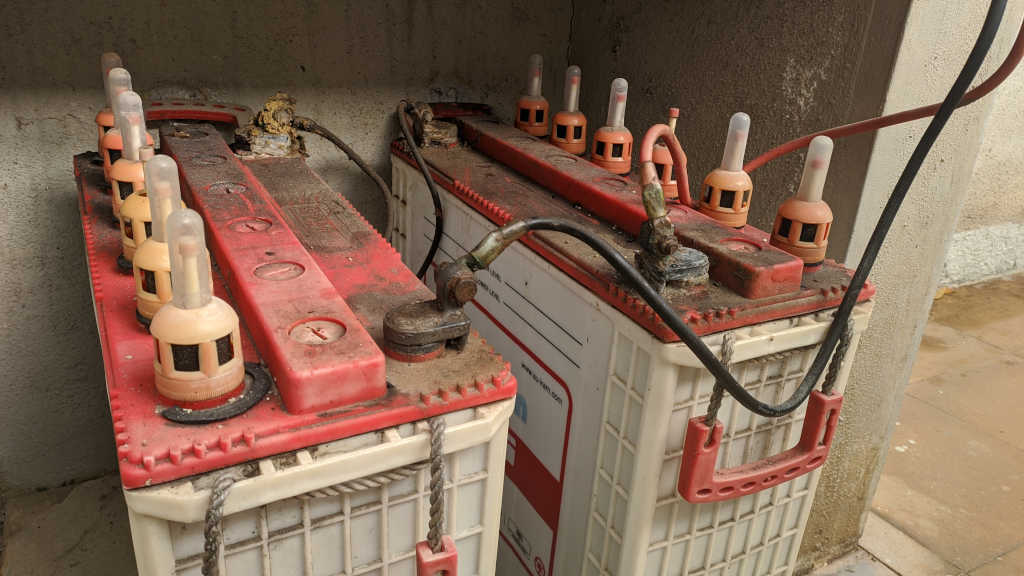
I unplugged input (grid) and output (load) connections to the UPS. Then removed the nuts and bolts holding the battery wires. Slid in the cables that connect SMU to batteries and screwed them back into place. Make sure all your polarities are correct. Positive terminal on the battery goes into the positive side of SMU. The SMU has reverse polarity protection, so not a big worry.
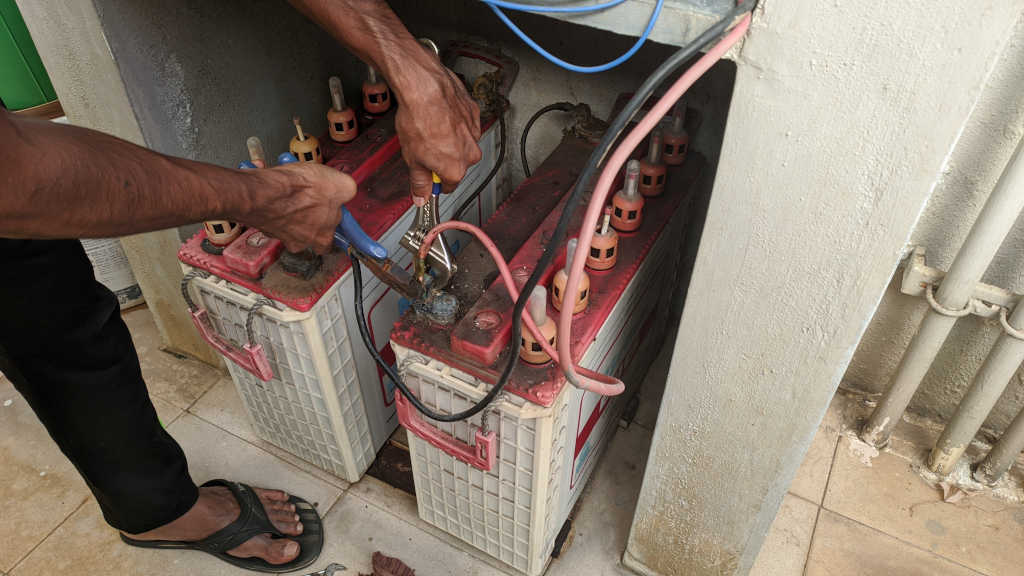
Safety considerations
A word of caution though. If you have left the batteries disconnected from the UPS for some time and then try to connect them to the batteries, you will see sparks. Lead acid batteries and sparks can be a dangerous combination and can start a fire (rare, but possible). You see, lead acid batteries (especially if they are old) may produce some harmful gases among which is hydrogen gas. And you know what happens when there is mix of hydrogen, oxygen (air) and spark (fire).
The cause of the spark is because the capacitors in the UPS will get discharged if left disconnected from mains and batteries. When you connect the batteries there will be a huge in-rush current to charge the capacitors. So do the connections quickly (5 mins or under) before the capacitors discharge too much. Alternatively use a resistor with good power rating in series with the battery to charge the capacitors first then connect the batteries directly.
I left the battery disconnected for a long time and forgot about the capacitors. Upon connecting the batteries, sparks were flying everywhere :). It caught me off guard but no damage done.
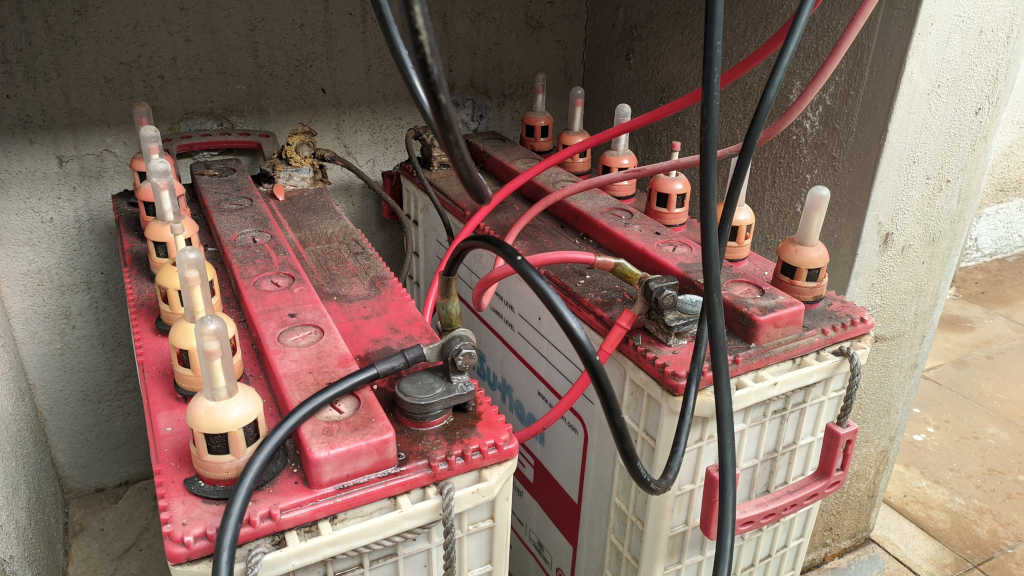
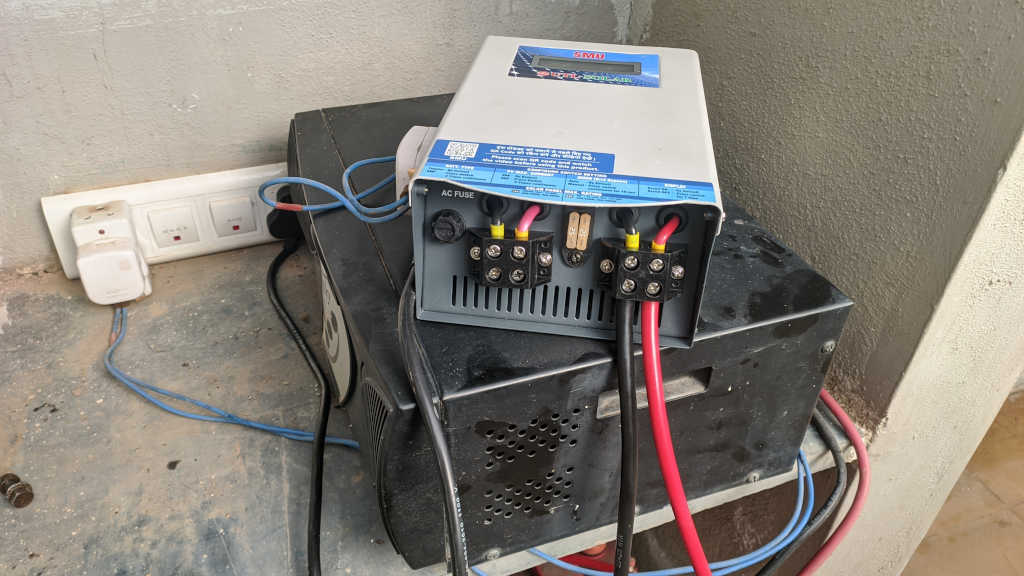
Wiring solar panels to SMU
This again is quite straight forward. Since the SMU did not have a MC4 input connection, I had to chop of the MC4 connector of the wire coming from the solar panel. Stripped out the insulation and made the connections into the screw terminals of SMU. Again, make sure the polarities are correct. Positive wire from solar connects to the positive terminal on the SMU.
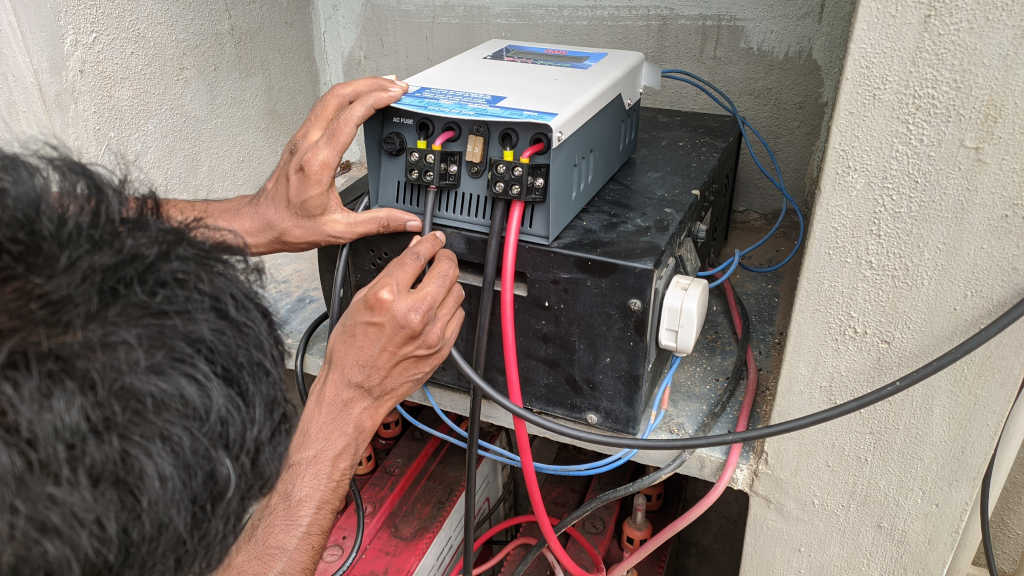
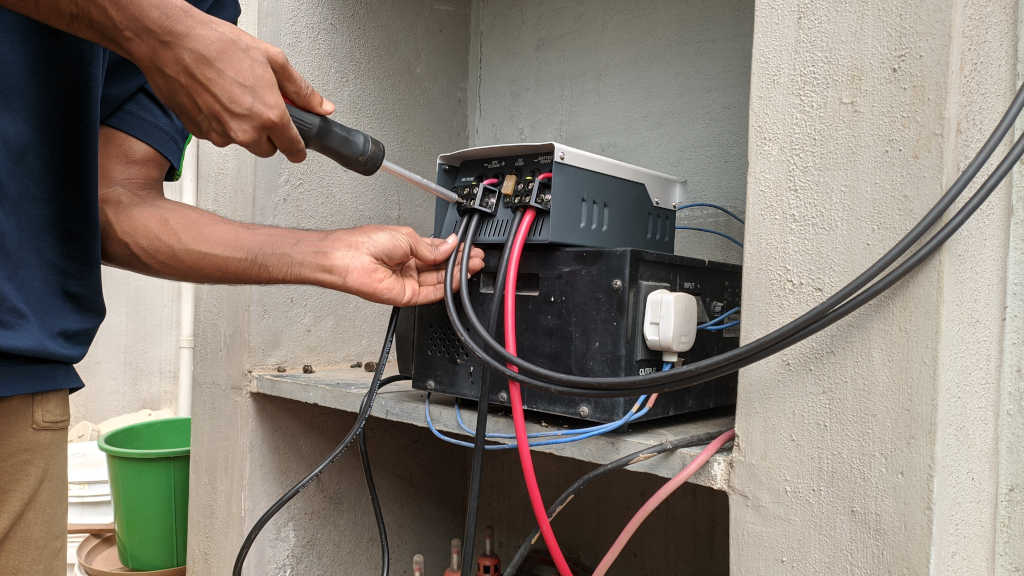
Wiring SMU and UPS
I can't leave the SMU sitting on my UPS. So I drilled a couple of holes on the side of the wall and hung it in there. Some cable management later, it all looks good.
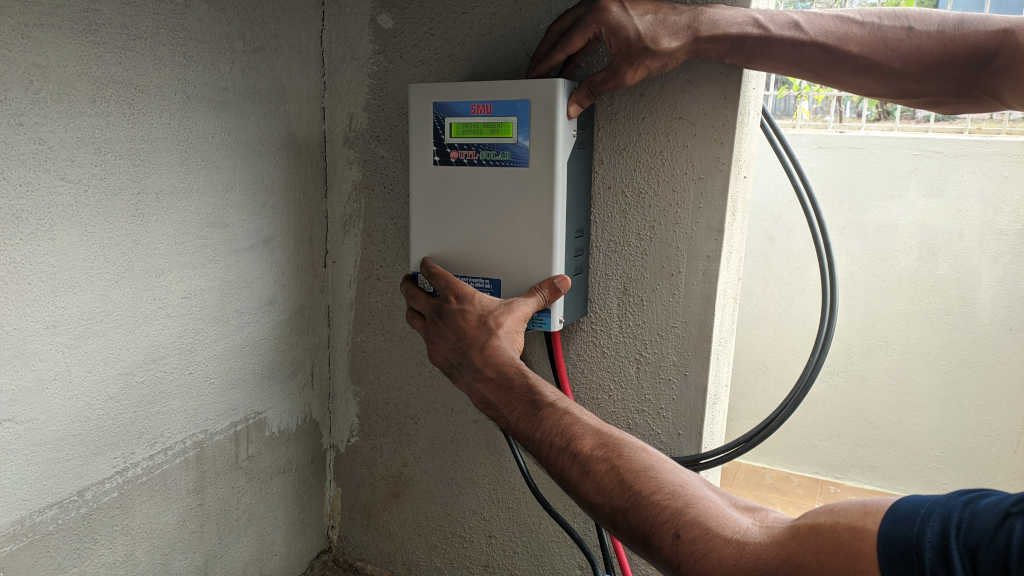
I connected the output of SMU to the input of UPS and finally connected the grid to SMU. That's it. Now the whole circuit is complete.
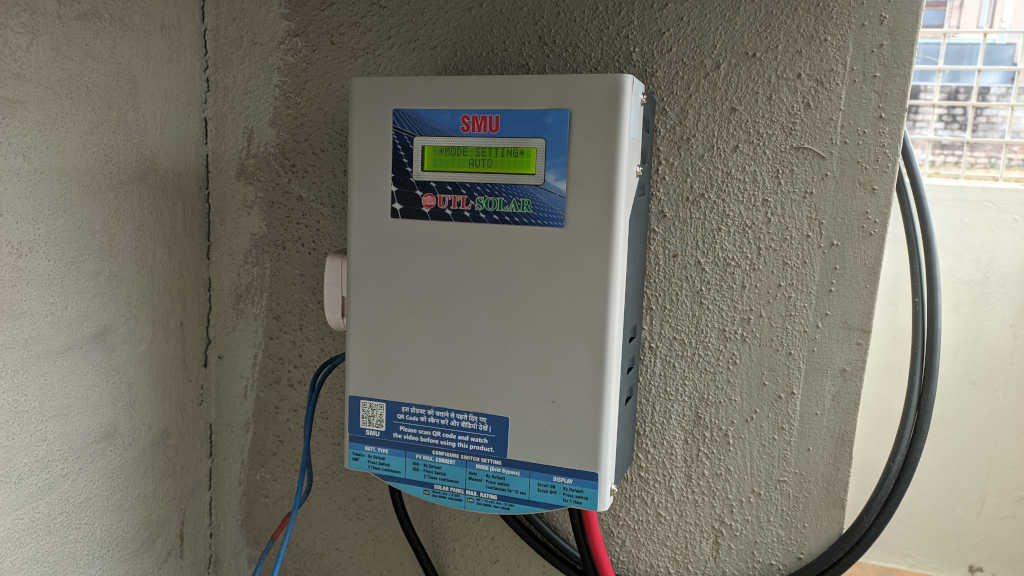
Check settings
The last step in the process is to check all the settings to make sure they match with your configuration. Check that the battery configuration is tubular (in my case) and 24V setting (the unit auto detects). Max solar battery charging current is set to 40A as opposed to 20A. Set the grid by-pass mode to automatic which basically means that the SMU will disconnect the load from grid when there is enough power from solar panels. That way you will be saving on electricity bills.
That is pretty much the whole setup. The SMU is working well so far. We installed it in February, 2021 and I could see the savings immediately. The SMU would disconnect the grid when the battery is fully charged and the solar panels are generating 2A. It keeps running my load on battery until there is enough solar power to keep the load running and battery voltage above 23V. After that the grid is connected. More updates in future posts.

